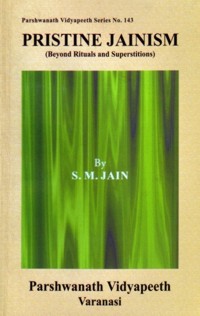In most festivities and ceremonies not only the large sums of money are spent uselessly and harmful noise pollution is generated but avoidable violence is inflicted on helpless living-beings ants, plants etc. During these festivities and processions, the devotees dance and walk carelessly, crushing and killing ants etc. This is against the preachings of Arhats. It is ordained that one should be careful in walking even lifting articles from one place and placing at other place so that no creature is harmed because of carelessness (Irya and other Samitis). On most such occasions flowers are profusely used, showered on processions, saints and idols, painfully on the advice of saints. Plucking flowers is violence (Hinsa) because it causes not only pain to plants but also abortion in plants. Flowers are genetic organs responsible for production of fruits and seeds, which is ultimate for all life forms. By removing flowers greatest harm is done not only to plants but also to our agricultural crops. Honey bee, butterflies and numerous such insects and moths help in pollination and hence production of crops. During the periods when there are no agricultural crops, these useful insects live on flowers in gardens, forests and other places. If there are no flowers then the useful insects will perish and thus the production of agricultural crops will be adversely affected. Experiments have shown that production increases by over 25% where honeybee keeping is done. By plucking flowers Jains are violating the vow of non-violence (Ahinsa), which is the core practice as prescribed in code of conduct in Jainism. Practice of sacrificial fires (Havans) is also common in Jain rituals. Fire is harmful to insects and is outright violence. Wood used is manufactured dry wood obtained by cutting green trees. Burning fire and offering butter rice etc are in no way instrumental to purify soul. It is only the rational trinity that helps. Saints, scholars and others justifying these wrong and irrational practices start quoting certain scriptures knowing fully well that many scriptures are at variance with fundamentals. Available scriptures are not canonical (Agam) but post canonical (Agametar) written by mundane beings (not kevli), coming from different backgrounds including Brahmanical under different situations and are not correct in all respects. Truth will have to be sifted after examining relevant background and situations of writers. Writer saints had many constraints of lost knowledge after kevali-shrut-kevali and also compulsion of prevailing situations. Earlier mythological stories (Puran) were not written, but when these were getting popular in other sects, Jains also started similar scriptures. There are several aberrations in mythological literature. There has been tendency or compulsion in writers to glorify the victorious rulers and minimise the good deeds of vanquished or even denounce him. There is much ado for Bharat Chakravati than for Bahubali when actually by all standards Bahubali was far superior. Similar is the tendency in case for Ram and Ravan, Krishna and Jarasandh, Pandavas & Kauravas. The compelling situations also forced the then writers to incorporate concepts of other sects also. Readers of Puranic literature will come across such obscene and vivid description of eyes and curves of women that there is hitch in reciting them before mothers, sisters and daughters. Such writings are from eminent saints like Jinsen and Gundhar etc. who have themselves denounced and forbade even reading of these because it is transgression of the vow of celibacy. There are numerous examples of glaring contradictions. The point is that all portions of available literature are not truly according to tenets of Jainism. While Jainism lays stress on equality, many saints force devotees to abstain water from shudras, though it is punishable under law. Likewise caste-based distinction does not confirm to principles, yet Saints forbid inter-sub-caste marriages even in Agarwal-Khandelwal Jains etc., resulting in many going out of fold.
Pristine Jainism : Tendentious Justification
Author:
 S.M. Jain
S.M. Jain
 S.M. Jain
S.M. Jain
Published: 12.05.2012
Sources
| Title: | Pristine Jainism (Beyond rituals and superstitions) |
| Publisher: | Parshwanath Vidyapeeth, Varanasi, India |
| by: | Prof. Sagarmal Jain |
| Edition: | 2003 |

Page statistics
This page has been viewed 1049 times.